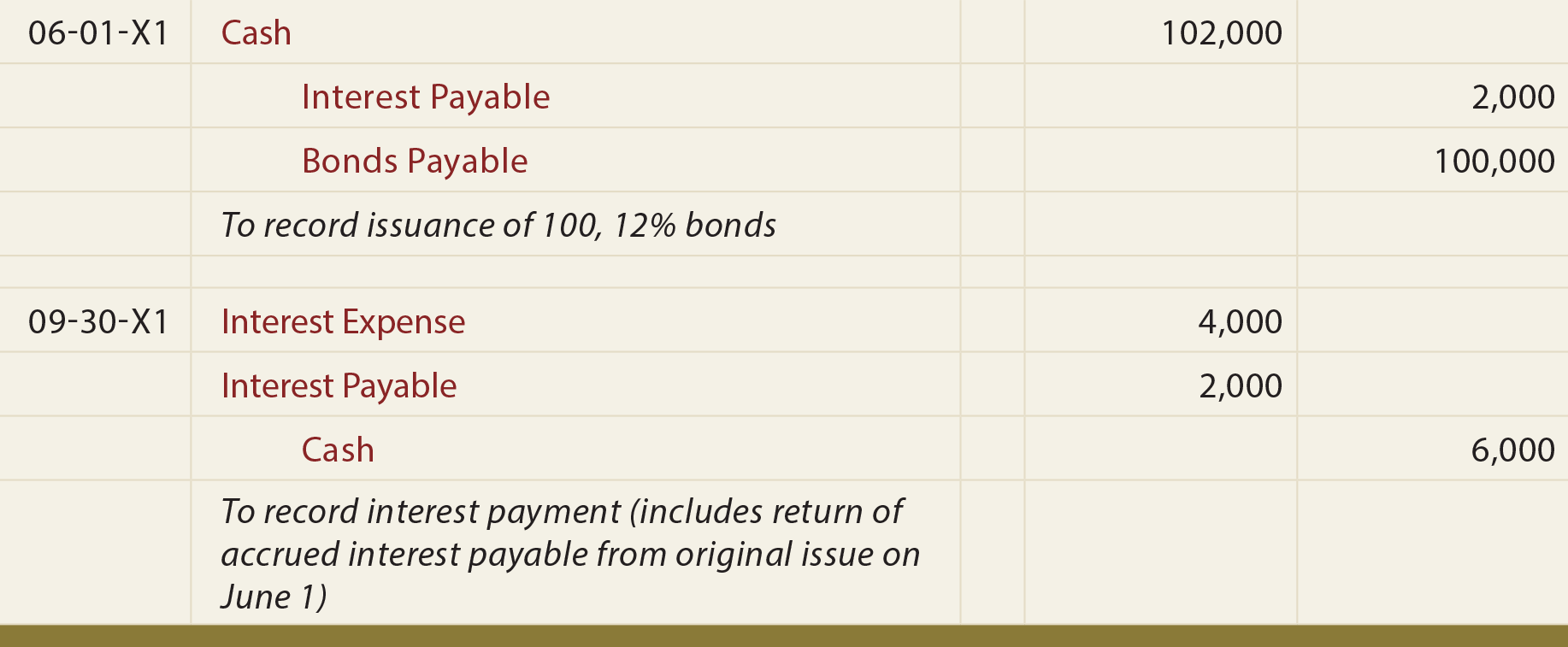
Short-term debt is payable within one year, and long-term debt is payable in more than one year. The explanation is that every day that the organization owes cash to some party, it causes premium cost and a commitment to pay the premium of using that cash. In order to understand the accounting for interest payable, we first need to understand what Interest Expense is.
How to Calculate Interest Expense
Even though no interest payments are made between mid-December and Dec. 31, the company’s December income statement needs to reflect profitability by showing accrued interest as an expense. This journal entry is usually made at the period end adjusting entry to record the interest payable and expense when the interest payment on borrowings has not been made yet. Now, since the business works under the accrual basis of accounting, the interest expense will be recorded at the end of the month, for the next 3 months. To record the accrued interest over an accounting period, debit your Accrued Interest Receivable account and credit your Interest Revenue account. And December 31 is our period-end adjusting entry in which we need to close the company’s account for the year. A liability account that reports amounts received in advance of providing goods or services.
Interest Payable vs Interest Expense
These are generally short-term debts, which must be paid off within a specified period of time, usually within 12 months of the expense being incurred. Since it’s a liability, interest payable accounts are recorded on the balance sheet and are due by the end of the accounting year or operating cycle. With the former, the company will incur an expense related to the cost of borrowing. Understanding a company’s interest expense helps to understand its capital structure and financial performance.
Automate Expenses with Accounting Software
For example, on Jan 1, 2020, the company ABC borrows $50,000 money from the bank to expand its business operation. The company ABC is required to pay $3,000 of the interest on Jan 1, every year for 5 years and the principal payment is required to make in the total amount at the end of the borrowing examples of itemized deductions period. A general ledger is a book of accounts that provides a detailed record of all of a business’s financial transactions. A journal entry is the first place where you record these transactions, in chronological order. Closing entries are journal entries made at the end of an accounting period.

How often should I make journal entries in my small business?
- Interest expense is the cost of using monitory facilities or consuming financial benefits for some time that offer by a financial institution or similar institution.
- Maria will repay the principal amount of debt plus interest @ 15% on April 30, 2021, on which the note payable will come due.
- The main reason that there is a difference between cash and accrual for interest is that interest expense is accrued based on the terms of the loan.
LSI Keywords like “financial obligations” and “accounting terms” enhance the depth of your understanding. Interest expense is a fundamental financial metric that reflects the cost of borrowing. Wages Payable is a liability account that reports the amounts owed to employees as of the balance sheet date. Amounts are routinely entered into this account when the company’s payroll records are processed. A review of the details confirms that this account’s balance of $1,200 is accurate as far as the payrolls that have been processed.
Calculating accrued interest during a period
By contrast to the accrual principle, the cash accounting principle recognizes an event when cash or compensation is received for an event. The amount of interest payable depends on the loan amount, interest rate, and length of time. If you accidentally recorded the wrong amount for an expense, you would create a reversing entry to correct the error. Deskera is an intuitive, user-friendly software you can use to automate not just expenses, but almost every part of your accounting process.
Likewise, if the company doesn’t record the above entry, both total expenses and liabilities will be understated. The company makes the journal entry of interest expense at the period-end adjusting entry to recognize the expense that has already incurred as well as to record the liability it owes. Likewise, it is necessary to record interest expense as it occurs to avoid the understatement of both expenses and liabilities in the income statement and the balance sheet respectively. We can make the accrued interest expense journal entry by debiting the interest expense account and crediting the interest payable account at the period-end adjusting entry. And later, when we make the interest payment, we will need to make another journal entry in order to eliminate the interest payable that we have recorded previously.
If this journal entry is not made, the company’s total liabilities in the balance sheet as well as total expenses in the income statement will be understated by $3,000. The company can make the interest payable journal entry by debiting the interest expense account and crediting the interest payable account. This journal entry is made to eliminate the liability that the company has recorded at the adjusting entry of the previous period.
Therefore, companies must ensure that all interest payable is accurately reported on the balance sheet. At the end of the month, company needs to record interest payable and interest expense. The journal entry debit interest expense $ 5,000 and the credit interest payable is $ 5,000. The amount of interest payable on a balance sheet may be much critical from financial statement analysis perspective. For example, a higher than normal amount of unpaid interest signifies that the entity is defaulting on its debt liabilities. A higher interest liability may also impair the entity’s liquidity position in the eyes of its stakeholders.
Likewise, we usually need to make the journal entry for the accrued interest expense at the period-end adjusting entry if we have the note payable or loan payable on the balance sheet. This journal entry of the $2,500 accrued interest is necessary at the end of our accounting period of 2021. If this journal entry is not made, our total expenses on the income statement as well as total liabilities on the balance sheet will be understated by $2,500 for the 2021 financial statements. Interest payable is the payment obligation that the company owes to its bank or creditor for the borrowing or note payable that it has. Adjusting entries at the end of an accounting period ensures that financial statements accurately reflect the company’s financial position and performance. For example, you might adjust the balances of certain asset and liability accounts to reflect their current values.

